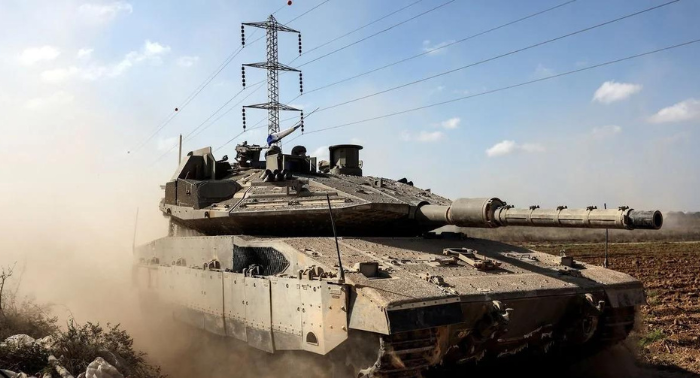On Wednesday, Israel’s government sanctioned a truce with Hamas, signaling a pause in a grueling six-week conflict. This cease-fire agreement involves an exchange: a number of hostages held in Gaza will be swapped for Palestinians detained in Israeli jails.
The Israeli authorities announced that as part of the agreement, Hamas will release 50 of the estimated 240 hostages in Gaza over four days. For every 10 hostages freed, Israel will extend the cease-fire by a day. The first group to be released under this deal will be women and children.
Prime Minister Benjamin Netanyahu, ahead of the crucial Cabinet vote on Wednesday morning, indicated that Israel’s military action against Hamas would recommence once the cease-fire period ends. The exact start time of the truce was not immediately known.
Netanyahu held a late-night Cabinet meeting on Tuesday, which lasted until the early hours of Wednesday. This prolonged session highlighted the delicate nature of suspending Israel’s military campaign against Hamas. Netanyahu assured his ministers that the pause in military action was merely a strategic maneuver and that the offensive would restart post-truce. Senior security officials also attended this critical meeting.
“We are at war, and we will continue the war,” Netanyahu declared, emphasizing Israel’s commitment to achieving its objectives, which include dismantling Hamas’ military prowess and ensuring all hostages are returned.
During the truce, Israel plans to maintain intelligence operations and prepare for future combat phases, with Netanyahu stating that the conflict will persist until Gaza poses no threat to Israel.
As Israeli forces engaged in intense combat with Palestinian militants in Gaza’s northern Jabaliya refugee camp and near overwhelmed hospitals, the cease-fire announcement came. These hospitals, already dealing with a high influx of patients, also serve as shelters for numerous families.
The conflict, which started on October 7 following a cross-border incursion by Hamas militants into southern Israel, resulted in significant casualties and abductions. According to the Gaza Health Ministry, Israeli air raids and ground operations have led to over 11,000 Palestinian casualties, mostly women and minors, and over 2,700 people are missing, likely buried under debris. The Health Ministry has not been able to update its count since November 11 due to the collapse of the healthcare system.
Hospitals in Gaza continue to report deaths from ongoing strikes. The Health Ministry in the West Bank ceased providing its death count as of Tuesday, citing unspecified reasons.
Israel maintains that its strikes have neutralized thousands of Hamas militants, though it has not provided concrete evidence for this claim.
In Lebanon, an Israeli strike reportedly killed two journalists affiliated with Al-Mayadeen TV, as stated by Lebanese officials and the network. The Israeli military has not commented on this incident. Additionally, an Israeli drone strike in Lebanon is said to have killed four Hamas members, according to Palestinian and Lebanese security officials.
Israeli forces have been engaged in frequent exchanges of fire with Hezbollah and Palestinian militants across the Lebanese border since the war began.
The negotiations for the cease-fire and hostage release, involving Israel, the United States, and Qatar as a mediator with Hamas, took several weeks. U.S. President Joe Biden expressed optimism on Tuesday about reaching a deal soon. Qatar’s Foreign Ministry spokesman, Majed al-Ansari, also shared a positive outlook, stating that an agreement seemed imminent.
Hamas official Izzat Rishq echoed this sentiment, suggesting a potential agreement in the near future.
In Gaza, the epicenter of the conflict has shifted to the densely populated Jabaliya refugee camp. Despite weeks of Israeli bombardment, Hamas fighters have reportedly regrouped in this area. The conflict has severely impacted two hospitals in Jabaliya, trapping hundreds inside. A recent strike inside the al-Awda hospital resulted in four deaths, including three doctors, as reported by the hospital’s director, Ahmed Mahna. This claim, however, has not been independently verified.
The Israeli military reported targeting tunnel shafts and rocket launchers in the area, with footage showing soldiers patrolling amidst gunfire.
The situation in northern Gaza remains critical, with an estimated 160,000 people in U.N. shelters, and thousands more seeking refuge in hospitals. With most hospitals non-operational, the medical situation in Gaza is described as “catastrophic” by WHO official Michael Ryan.
In the Indonesia Hospital near Jabaliya, staff had to bury 50 bodies in the hospital’s courtyard, and up to 600 injured people and around 2,000 displaced Palestinians are stranded there, per Gaza’s Health Ministry.
Israel has provided evidence of militant activity at Shifa Hospital, Gaza’s largest, but has not substantiated its claims of a significant Hamas command center beneath the facility.
Most of Gaza’s 2.3 million population have relocated to the south, where Israeli strikes continue, and the military plans to expand its ground invasion. Food, water, and fuel shortages are widespread, and central electricity has been out for over a month.




